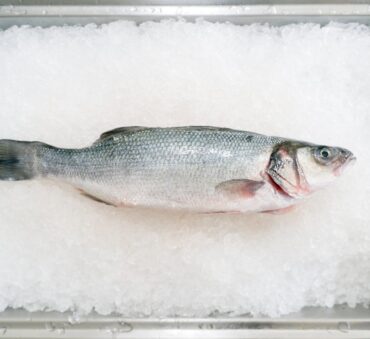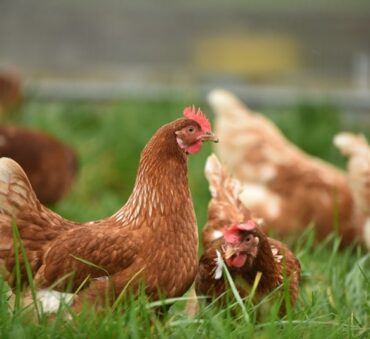In the United States, food waste accounts for 30-40 percent of the food supply, resulting in approximately 133 billion pounds of food waste annually.
With widespread attention on the food waste crisis, innovative solutions are emerging to reduce the environmental and economic repercussions associated with it, with food waste tracking being among the promising approaches.
By utilizing both manual methods and advanced technology, businesses of all sizes can establish a food waste tracking system that promotes sustainability and makes a big difference in their communities.
This article explores everything related to tracking food waste, from the components and methods of food waste tracking to learning how to track food waste in your own business operations.
Key Takeaways
- A food waste tracking system helps businesses identify where food waste is generated and how they can prevent waste, resulting in environmental, economic, and social benefits.
- An effective food waste tracking system involves identifying sources of waste, measuring the amount of food wasted, analyzing the data, and making changes.
- There are various methods for weighing and documenting waste, with both modern and traditional solutions available. This includes using scales, visual inspection of waste bins, and implementing food waste technology.
- Data analysis is a great tool for helping businesses understand waste patterns, identify high-waste areas, and make informed decisions to reduce waste, assisting in the prevention of waste at different stages of the supply chain.
- Food waste tracking provides multifaceted advantages to both businesses and the environment, including cost savings, improved inventory management, reduced greenhouse gas emissions, and the conservation of resources, among others.
The Importance of Food Waste Tracking
Food waste tracking is the process of monitoring and recording the amount of waste generated in households, businesses, or even supply chains. A comprehensive food waste tracking system helps businesses and organizations recognize where waste is being generated so they can identify how to prevent surplus food waste. So why is this important?
Reducing food waste has significant environmental, economic, and social benefits. From an environmental standpoint, food waste is a large contributor to greenhouse gas emissions, landfill use, air and water pollution, and the waste of natural resources. Since food waste affects the environment in a number of ways, tracking food waste opens the possibility of creating a more sustainable future with undeniable long-term effects.
Learning how to track food waste is also an opportunity for businesses and households to reduce the economic impact of food waste. One study even showed that food-related businesses such as canteens, hotels, and restaurants can experience up to a 14-fold return on their investment in food waste reduction programs. And since having a clear understanding of where waste is being generated is the first step to enjoying such economic benefits, businesses and households alike can save valuable resources with a food waste tracking system.
However, the environment and our wallets aren’t the only aspects to consider, as reducing food waste can bring great social changes. With food donation being one of the strategies that companies can implement to reduce waste and potentially gain tax incentives, it also addresses the large food insecurity crisis around the world.
Overall, tracking food waste can have a huge role in sustainability and resource management. Since every business is distinct, a personalized waste reduction system is key to making large-scale changes.

Components of Food Waste Tracking
An effective food waste tracking system involves identifying sources of waste, measuring the amount of food wasted, analyzing the data, and making changes. Let’s take a look at each of these components in more detail:
- Identifying sources of waste: This is the first step towards improving awareness and reducing sources of waste, which may include overproduction, improper storage, or spoilage, among others. This step may look different for every business depending on their specific needs; some may evaluate waste generated at all stages of the supply chain, from preparation to plate waste, while others may focus on specific areas of interest.
- Measuring the amount of food waste generated: Quantitative measurements help businesses and individuals understand how severe the problem is, allowing them to track progress over time. Companies may choose to track this information on a detailed food waste tracking excel sheet or use food waste tracking apps.
- Analyzing the data: Analyzing the data helps businesses identify patterns, trends, and areas of opportunity for waste reduction. This step should evaluate how much waste is produced, what type of waste, the underlying causes behind it, and the potential cost savings of reducing it. The implementation of advanced technology is a huge advantage during this step, as it can use predictive modeling to provide valuable insights.
- Making large-scale changes: With this information, businesses can make company-wide changes to promote sustainability. This may include changes to storage methods, transportation logistics, or even employee training. At the household level, families can make small changes in their routine to reduce waste and use their resources more effectively, such as better storage methods, more accurate plate sizes, or repurposing leftovers.
Methods for Tracking Food Waste
There are various methods for weighing and documenting waste, with both modern and traditional solutions available.
A great option for businesses of all sizes is the use of weighing scales, as they provide accurate measurements and can be used throughout the entire supply chain. The advantage of this method is that scales can be as simple or complex as a business requires; businesses can use traditional scales and manually document the results on a food waste tracking sheet or use smart scales to record information and transmit it to other applications.
Another traditional method available to all companies is the visual inspection of waste bins. While this is a simple and fast option, businesses must estimate how much waste is produced, meaning that the information is not always accurate. That said, businesses that want to use this method should inspect bins for an extended period of time, carefully documenting their findings to track progress.
Businesses can also leverage digital apps for recording and tracking waste. These apps not only document the amount of waste generated but can also track the economic loss and carbon footprint associated with it. Many apps also have valuable features, such as insights into inventory management, expiration notifications, and more.
Today, food waste technology is being increasingly adopted, revolutionizing food waste tracking by using sensors, scales, cameras, and scanners to measure food waste at different stages of the food cycle. Among its greatest features is the use of data analysis to help businesses understand waste patterns, identify high-waste areas, and make informed decisions to reduce waste. By identifying trends in food waste, businesses can prevent the waste from being generated at different stages of the supply chain. Even more, governments can use data analytics to create policies that drive large-scale change.
Since there are multiple options available, companies must ask, which is the right option for me?
Traditional measuring and tracking methods are simple and low-cost, making them a great option for households or businesses that don’t have the infrastructure to implement food waste technology. However, manual methods are time-consuming and often lack accuracy, which is important in tracking progress and identifying waste sources.
Modern digital solutions, on the other hand, offer real-time tracking and monitoring, allowing for more accurate documentation and streamlining solutions. That said, advanced solutions require a bigger upfront investment than manual methods, which may not be accessible for all companies.
Whether companies opt for food waste tracking forms or food waste technology, what’s important is that they carefully evaluate the amount of waste generated and make an active change to reduce it. When choosing the right method, businesses must consider the advantages, cost, and potential long-term savings.

Implementing a Food Waste Tracking System
Making company-wide changes may seem intimidating, but a proper food waste tracking system can produce long-term environmental and economic changes, making it a priority for many businesses. If you’re ready to create a waste management strategy from scratch, follow these steps:
- Assess the situation: The first step to implementing a food waste tracking system is to assess how much food waste is being generated, the type of waste produced, and where it’s coming from. To do this, companies can perform a food waste audit to collect, measure, and record food waste data.
- Set goals: Once businesses have a comprehensive idea of how much waste is produced within their organization, they can set detailed short- and long-term goals. For instance, companies may want to reduce food waste within their organization by 30% in one year or improve their recycling efforts by 50% to divert food from landfills. During this stage, businesses should also identify how progress will be measured and how often results will be analyzed.
- Choose the right tools: Businesses must choose the right tools to meet their specific goals, with customized solutions to improve the success of their waste management strategy. This may include the traditional methods mentioned above, the implementation of advanced technology, or a combination of the two.
- Train staff: Employees play a big role in implementing food waste management techniques, meaning hands-on training, workshops, and widespread education on waste reduction efforts are crucial. During this transition, it’s important to encourage employees to actively participate, which may include company-wide incentives or fostering a culture that invites open communication regarding doubts or new ideas.
- Implement new system: After proper training and the adoption of waste reduction and tracking tools, businesses can start implementing their plan. As mentioned, open communication is key, as big changes in operations may require extra attention at the beginning.
- Monitor progress: To ensure that the system is used effectively, businesses should conduct regular audits and use data to drive continuous improvement. This ensures that companies are reaching their goals and achieving maximum results.
Who Benefits from Food Waste Tracking
Food waste tracking helps divert food from landfills, reduce greenhouse gases, and create a more sustainable future. But aside from environmental benefits, the following groups have a lot to gain from food waste reduction:
- Restaurants: By reducing waste, restaurants can boost profits by decreasing operational costs, minimizing trimmings and scraps, and improving the sustainability of the restaurant. In addition, detailed insights into restaurant food waste can help businesses align menu offerings with consumer preferences, leading to improved customer satisfaction. Increased sustainability efforts also enhance a restaurant’s brand image, positioning them as forward-thinking and eco-friendly.
- Retail shops: Tracking food waste and implementing changes can make a huge difference in retail operations. With overproduction and poor inventory management acting as huge contributors to supermarket food waste, food waste tracking can help identify opportunities for improvement, therefore helping reduce spoilage and leading to large cost savings. Stores can also implement certain strategies to encourage customers to contribute to their waste reduction efforts, such as offering discounts for near-expiry products.
- Producers: Many manufacturers experience extreme losses due to overproduction and inaccurate demand forecasting. When restaurants and retailers create a food waste tracking system, they also have the opportunity to improve inventory management and collaboration with producers. This helps manufacturers prevent waste and lower costs associated with loss.
- Consumers: While many consumers may not participate directly in food waste tracking, they may experience secondhand benefits. This is because producers and retailers often raise prices to make up for the substantial loss experienced throughout the supply chain. As junk food waste decreases, consumers may experience lower prices on valuable household products, making them more accessible to a larger audience.
Food waste in the supply chain occurs at all stages, meaning comprehensive strategies should be applied at all levels, from reduced waste in production to more sustainable distribution practices.

Benefits of Food Waste Tracking
Food waste tracking provides multifaceted advantages to both businesses and the environment.
As discussed, businesses throughout the supply chain have a huge incentive to reduce waste, as it can lead to cost savings, improved inventory management, enhanced efficiency in operations, and the ability to create better experiences for their customers. These components not only have economic benefits but also help businesses stand out for their environmental efforts. Food waste tracking can also serve as a tool for compliance, helping businesses comply with the increasing regulatory requirements around waste management.
Food waste reduction efforts also have a huge impact on the environment, working to reduce greenhouse gas emissions, conserve resources like water and energy, minimize pollution and landfill use, and contribute to long-term sustainability goals.
There are also social and ethical advantages to reducing waste, with increased food donation efforts acting as a great waste management strategy. By diverting excess food to those in need, businesses can help address food scarcity and foster a culture of sustainability within their communities.
As businesses and organizations improve their food waste reduction efforts, they’re also setting an example for their employees, customers, and community. This helps inspire changes in consumer behavior, which may include reduced food waste in households, a better understanding of expiration dates, and an increase in local initiatives.
The Bottom Line
Tracking food waste is the first step to increasing sustainability efforts. Whether businesses implement company-wide changes or households want to make more conscious decisions, awareness is the first step to creating a sustainable future.
If your business is interested in reducing food waste, we recommend partnering with a commercial food waste recycling and disposal services. At Shapiro, we’re experts in creating customized solutions to large-scale waste, meaning we’ll work closely with you to find the right solution for your specific needs.
Contact us today if you’re interested in learning more about our organic waste management services.
Baily Ramsey, an accomplished marketing specialist, brings a unique blend of anthropological insight and marketing finesse to the digital landscape. Specializing in educational content creation, she creates content for various industries, with a particular interest in environmental initiatives.


